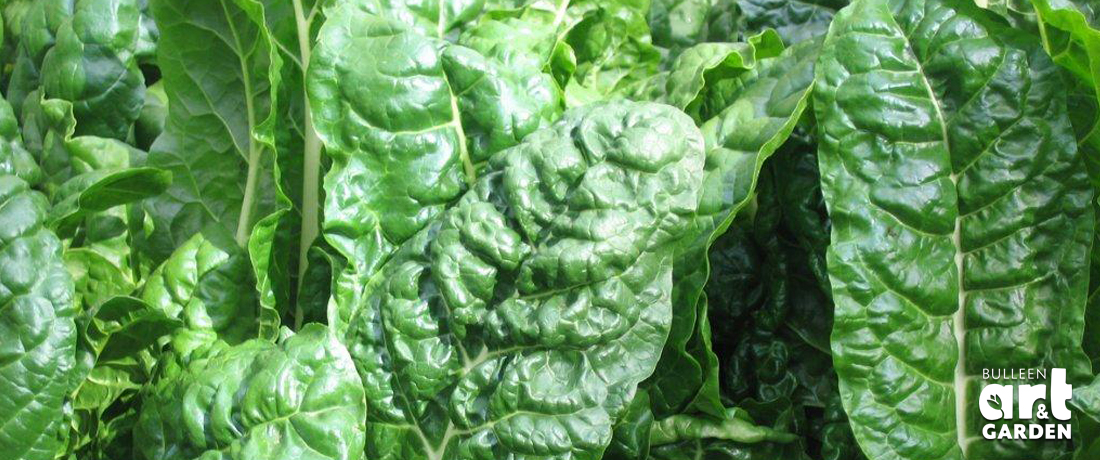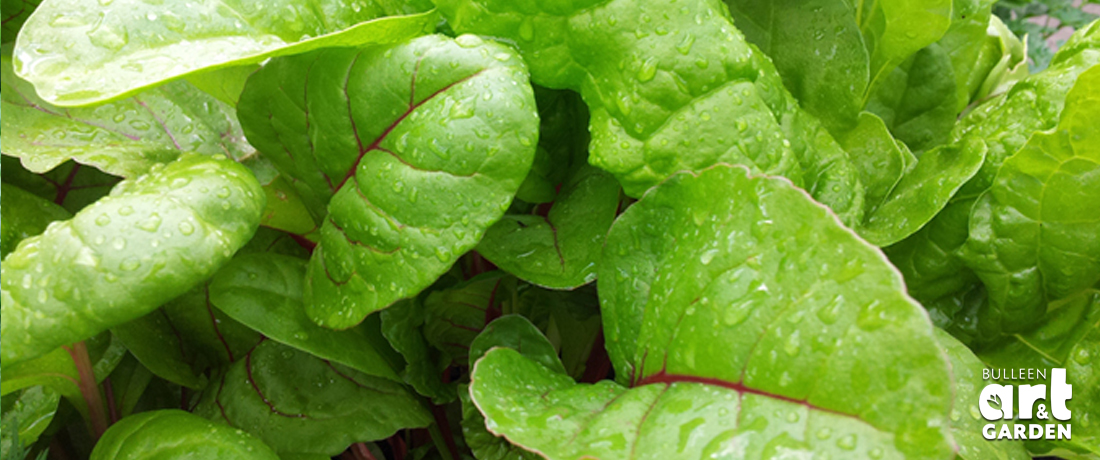
 Important note about plant availability. Important note about plant availability.There are hundreds of factsheets on our website provided for your information. Not all plants will be available at all times throughout the year. To confirm availability please call (03) 8850 3030 and ask for the nursery. |
Although distant cousins, silverbeet and spinach have similar growing needs (not to mention taste). Both are easy to grow in the right spot, although spinach will struggle in really hot spots. Good looking and good for you, these two tasty treats are vegie patch winners!
Silverbeet and spinach will both thrive in a partially sunny spot (about 3 to 4 hours sun per day), protected from wind. They should be protected from the hot sun, so consider a shade cloth tent, or planting these guys under taller crops like sweet corn. Leave about 30cm between each plant.
Good drainage, loads of organic matter and a pH between 6-7 will see you get the best out of these two. Well-rotted compost (containing manures) is an excellent soil additive and should be added to the soil a month before planting. Mulch well with a straw based mulch.
Being leafy vegies, silverbeet and spinach will respond incredibly well to regular feeds. Worm wee or a weak seaweed tea should be applied every three weeks to keep these guys happy and humming and preventing them from setting seed too early. Both these vegies will thrive if planted after a green manure crop.

Spinach and silverbeet should never be left to dry out and need consistent moisture to remain pest and problem free. A deep soaking, several times a week is ideal.
Snails and slugs are HUGE fans of both spinach and silverbeet. There are a couple of things you can do to ward off the inevitable invasion. Spray a coffee mix (one part espresso to ten parts water) on the plants and sprinkle coffee grounds around the base. Beer traps are also very effective, so pop a few old plastic containers with 1cm of beer in them around the garden in the evening. These will be full of slimy critters by the next morning. Creating obstacles of crushed eggshells, lime, wood ash, wood shavings and sawdust around plants also works.
Spinach and silverbeet are quick and perfect for the impatient gardener. Often ready to harvest in as little as six weeks, outer leaves can be removed as soon as they are large enough. Remove leaves by puling downwards, as cutting can encourage bacteria.
Plant with good friends like: beetroot, lavender, lovage, marjoram, onion, cherries, celery and eggplant.
Avoid planting with basil and wormwood.
Position: Part Sun (Spinach will need protection in hot weather)
Water Needs: Moderate
Difficulty: Easy
How Long: 6 weeks
Silverbeet varieties include
Fordhook Giant: Tall growing, tasty silverbeet with bright white stems and delicious, deep green leaves.
Rainbow: Sure to brighten up your garden, Rainbow Silverbeet is a gorgeous mix of red, yellow, green and pink stemmed silverbeet varieties. Generally sweeter in flavour than other varieties.
Ruby Chard: Sporting stunning bright red stems, Ruby Chard is a pleasant tasting, highly productive silverbeet. Put some colour in your life!
Spinach varieties include
Baby Leaf: Grown for its small, sweet leaves, Baby Leaf spinach is quick to mature, and could see you serving up a salad in as little as 6 weeks.
English Varieties: The perfect spinach for our Melbourne weather, English Spinach can be planted in autumn or winter and will reward you with deep green, incredibly tasty leaves.
Malabar or Climbing Spinach: Technically, this is not a true spinach, but this perennial climber is a good standby substitute. This fleshy leaved climber is stronger in flavour than traditional spinach and is great cooked in stirfries and fish dishes.
